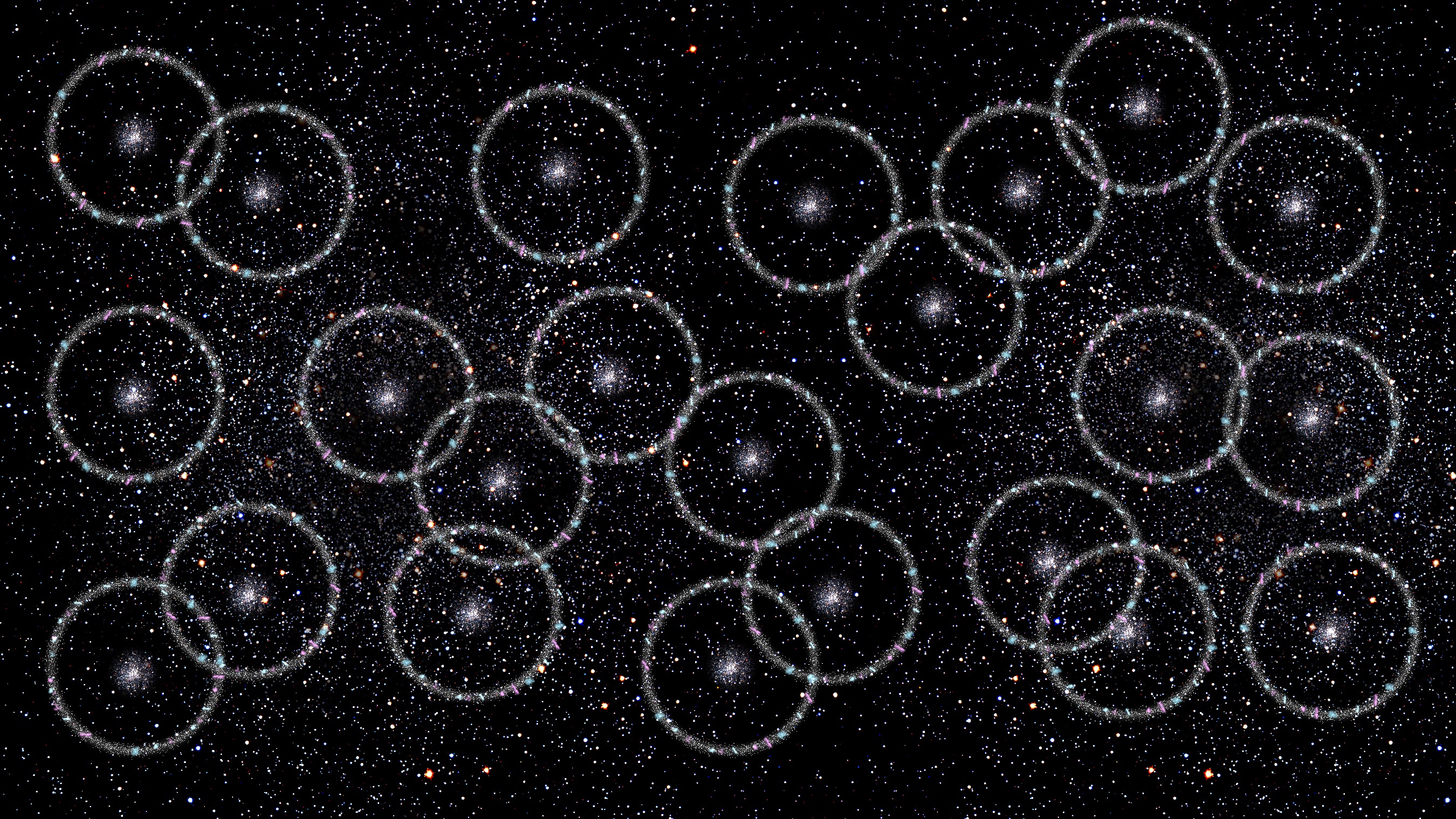Ask Ethan: How Do Black Hole Jets Carve Out Bubbles In Space?
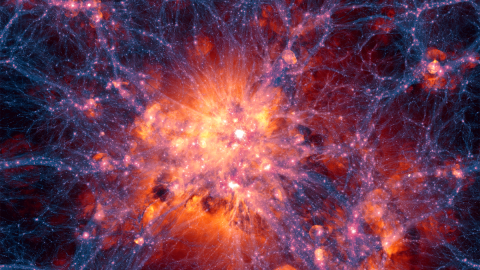
If they shoot out straight lines of high-energy particles, why do they carve bubble-like shapes?
“When a person starts to talk about their dreams, it’s as if something bubbles up from within. Their eyes brighten, their face glows, and you can feel the excitement in their words.” –John C. Maxwell
If you want to accelerate particles close to the speed of light, you need an intense energy source. In space, stars can get particles up to modestly high energies, while explosions such as supernovae create even stronger bursts. The strongest, sustained sources of high-energy emission are the supermassive black holes found at the centers of the largest galaxies. But when we look at the largest scales in the Universe, something didn’t add up for Robert Coolman, who asks,
I really like the video [of the Illustris simulation], so much that I hunted down a description… which surprised me: “What appear to be explosions actually come from supermassive black holes blasting jets of material into intergalactic space, carving out huge bubbles.” This puzzles me because I expected jets to blast along a single axis; not as a sphere.
For those of you who’ve never seen it, here’s the Illustris simulation, which shows how large-scale structure, dark matter, gas and normal matter evolve as the Universe ages from the earliest stages until the present day.
Starting at about 1:08 in the video, and clearly visible at 1:25 and onwards when they’re showing dark matter and gas side-by-side, you can see these apparent explosions at the largest nodes in the large-scale structure of the Universe. You might think that these are representative of supernova explosions simply from a visual inspection, but in reality, supernova explosions would be far too frequent — occurring tens of thousands of times in each “frame” of the simulation — to be responsible for this. We can’t actually see the dark matter, either, yet the simulation illustrates this to help us perceive the phenomenon that causes the gravitational force. If you want to know how the gravitational effects of structure formation and the effects of normal matter — mostly in the form of gas — differ, the Illustris simulation can showcase that difference as well.
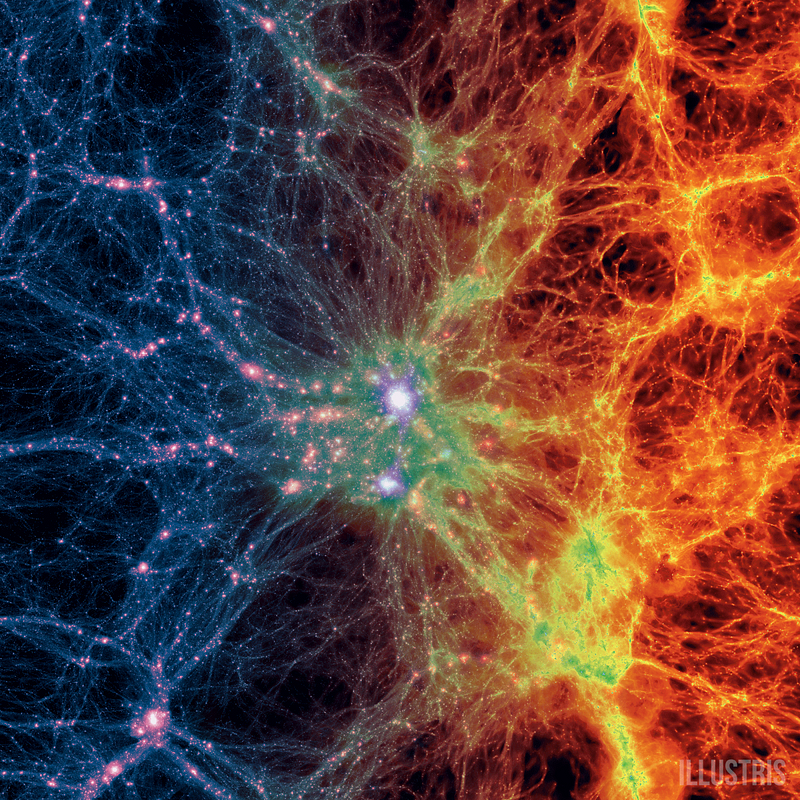
Whereas dark matter forms these simple, filamentary structures, governed only by gravitational attraction and the expansion of the Universe, the physics of the normal matter — the gas made out of protons, neutrons and electrons — is much more complicated. Not only does this gas stick together into clumps, allowing it to form stars, galaxies and clusters of galaxies, but the gas is also sensitive to a whole slew of electromagnetic forces. This means it’s both clumpier in small-scale regions than dark matter is, but it’s also more diffuse in the intergalactic and intercluster mediums, since the gas (and ionized gas, in the form of plasma) can be accelerated to great speeds.
The four-panel video, above, showcases the stars/visible light expected to occur in a region of space ~33 million light years on a side in the upper left panel, with the gas density in the upper right and — most importantly — the gas temperature in the lower left. Notice how the gas temperature is where you see these spherical explosions, which do primarily arise from supermassive black hole feedback. There are other mechanisms for gas heating and feedback which are important, but these features are caused by supermassive black hole outbursts, which typically last between millions to hundreds of millions of years.
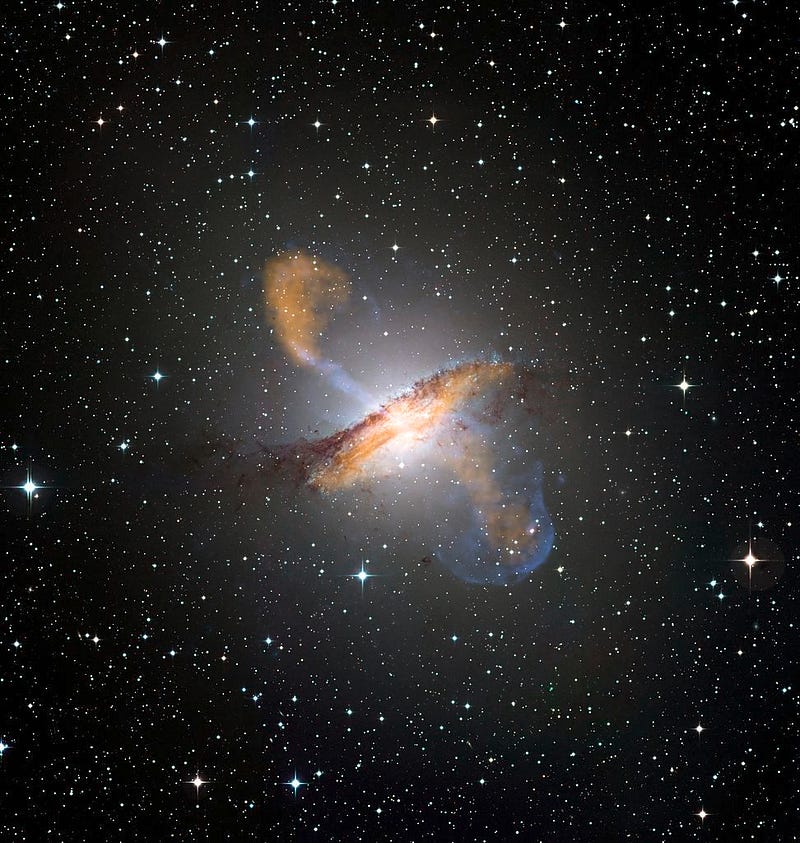
Yet I completely understand the sentiment that you’d expect this heating to take the form of collimated jets, since that’s what we see when we look at, say, the supermassive black holes at the hearts of the galaxy Centaurus A, above, or at the giant elliptical Messier 87, below.
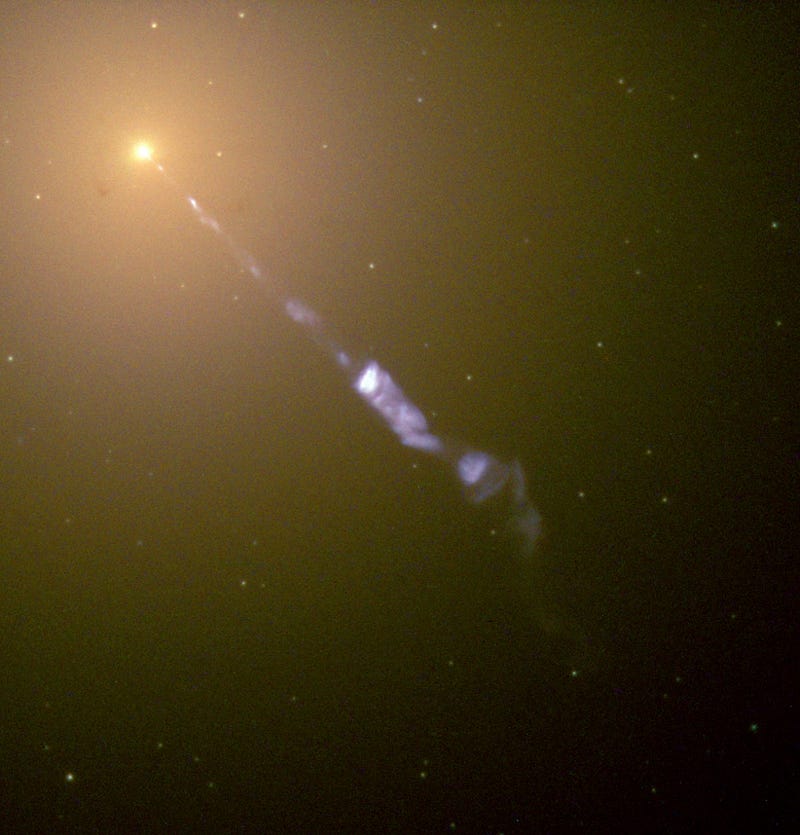
So if the matter from these jets is accelerated in such a highly collimated line, then why does the gas heat up and expand outward in an apparently spherical shape? To answer this, I want you to consider something you don’t normally consider: the fact that the Universe, as we see it, isn’t the Universe that’s actually there. For example, here’s a picture of that same galaxy, Messier 87, and its jet, as viewed in X-ray wavelengths by Chandra (blue) and radio wavelengths by the Very Large Array (red), instead of in visible and UV light by Hubble.
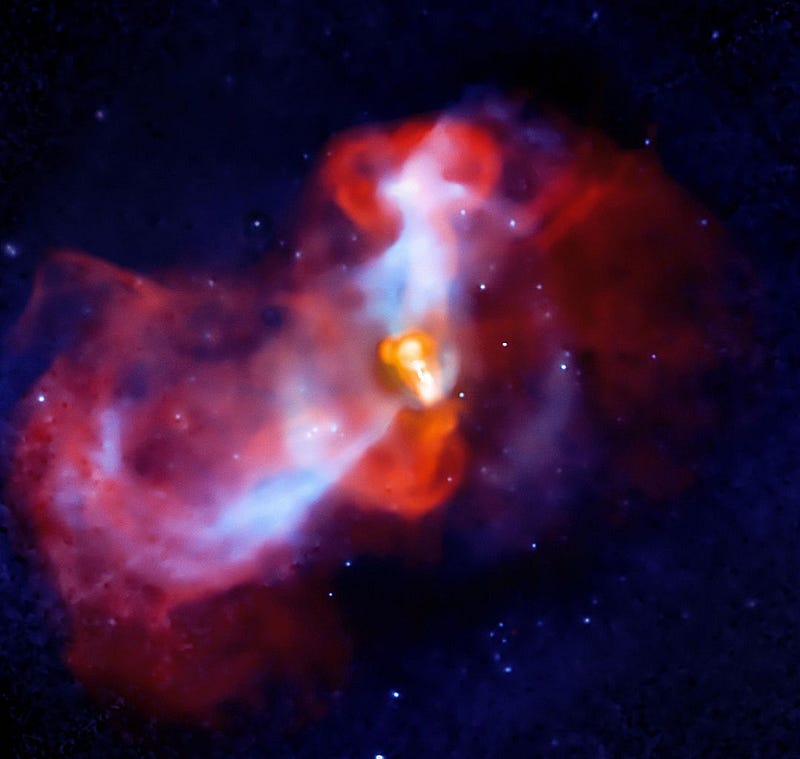
These aren’t really “jets” at all anymore, are they? They’re not exactly spherical, but they’re certainly not tightly collimated like you’d expect. The reason for this is twofold:
- Gas and normal matter constantly fall in to large galaxies and all large-scale structure, and much of it crosses the path of this jet freely.
- Even if the galaxy remains at a fixed orientation, the gas on the outskirts swirls around and has wild peculiar motions, resulting in a much more even distribution.
Even our own Milky Way, which has a somewhat quiet and small supermassive black hole, exhibits two giant lobes of high-energy radiation as identified by Fermi.
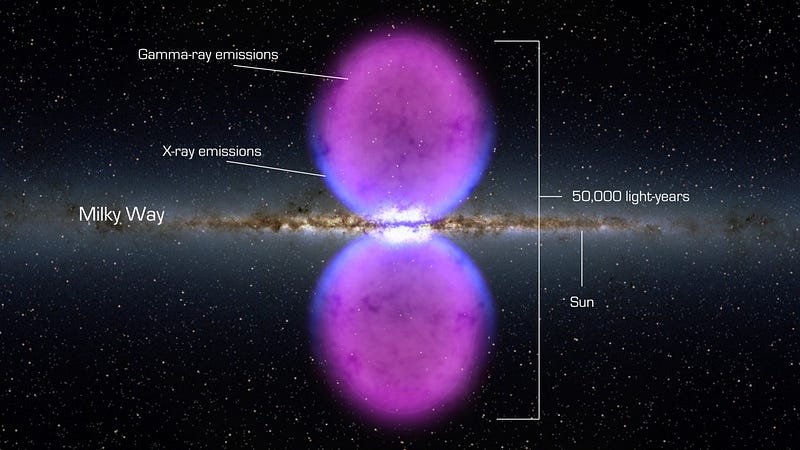
Understanding radiative feedback from a whole slew of sources has been an active area of research that’s been advanced greatly by the use of numerical simulations, including by Illustris but also in the years leading up to it. It isn’t visible light that you’re seeing in the gas, mind you, but gas temperature that’s mapped out in these “blooming explosions” in the Illustris simulation, and that is primarily due to supermassive black hole feedback. It’s a reminder that when we look out at the Universe, both via our greatest observatories and in simulations, there’s a whole lot more going on than what stellar light will bring to our eyes.
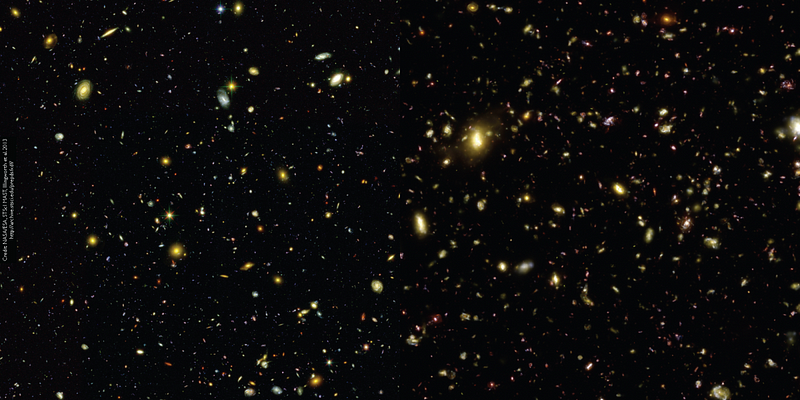
While visible light might be confined to a narrow region from the jet, the peculiar motion of the gas around it combined with the simple physical effects of thermal heat transfer make sure that energy gets distributed all over the place, not simply in straight lines. It’s important to remember, though, that what you’re seeing as explosions aren’t the visible light or matter; they’re an illustration of gas temperature, and that’s what explodes all around these active black holes!
Submit your questions and suggestions for the next Ask Ethan here!
This post first appeared at Forbes. Leave your comments on our forum, check out our first book: Beyond The Galaxy, and support our Patreon campaign!


